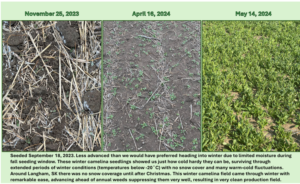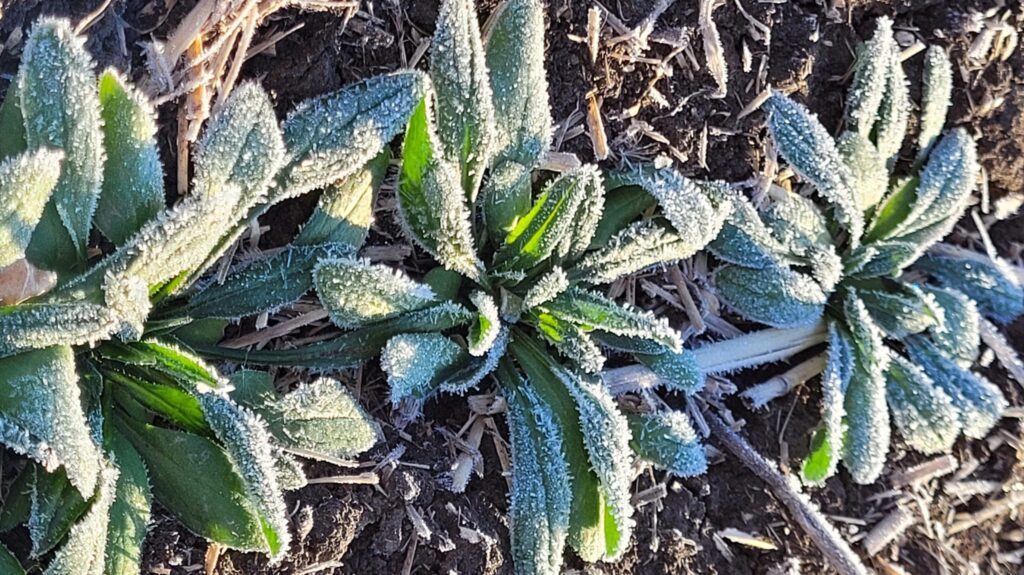Darcy and Marilyn Friesen of Friesen Acres Ltd. farm southeast of Langham, SK. The land in this area has light, sandy soils, and there was low precipitation from 2019 to 2023. Herbicide-resistant kochia – a highly-invasive noxious weed – is also an issue.
The Friesens needed a crop alternative that could perform in this region on lower inputs. After doing some research, they decided on winter camelina, knowing that it grows well in low moisture and matures quickly, choking out the kochia. Winter camelina can be seeded in the fall and matures early the following summer – a mid- to late-July harvest in Saskatchewan. (Read: Winter camelina a new oilseed option?)
Smart Earth Camelina is a Saskatchewan company that has been breeding and developing spring and winter camelina for over 20 years. The company is on target to launch a proprietary, large-seeded, herbicide resistant winter camelina variety in 2025.
Scroll down for more information about the benefits of winter camelina and photos from the field.

Benefits of planting winter camelina:
- Moisture preservation: Winter camelina uses early spring moisture in dry areas more efficiently than spring crops (including spring camelina) and moisture is not lost in the seeding process. In wet springs, it helps to avoid problems of late seeding.
- Soil preservation: Winter camelina provides soil cover during the fall and winter, reducing potential soil loss from water and wind erosion
- Reduce fertilizer leaching: Winter camelina can adsorb and store up to 70 lbs per acre of nitrogen fertilizer left behind by previous crops.
- Time management: Winter camelina matures earlier than spring camelina, spreading out harvest operations.
- Bee health: Winter camelina flowers early in the spring and provides an early source of nectar for bees.
- Pest control: Since winter camelina is well established before spring annual weeds start to emerge it can choke out problematic weeds, such as kochia. It also provides an ecological tool to help manage common annual pests, such as aster leafhopper, cutworms, and diamondback moths.
- Healthy oils: Because winter camelina seed develops and matures at cooler temperatures, it often produces oils that are higher in Omega-3 vs spring camelina.
If you are interested in learning more about Smart Earth Camelina’s winter camelina varieties, contact Carlene Sarvas
Thank you to Smart Earth Camelina for submitting the article and photos.
More: Winter camelina a new oilseed option? (Article and video – Western Producer, June 26, 2024)
Previous Article – FCC invests $5M into GIFS to accelerate agricultural innovation Next Article – Working with the “right people” is key to startup success
